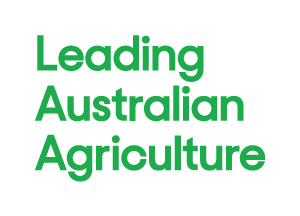Article brought to you by Prime Super

Boosting your super when you can
Few (if any) industries are as impacted by the seasons as farming is, and every year around Australia, there are those who face tough times while others are looking at bumper crops and strong markets. This uncertainty makes farmers very adept at planning for all sorts of conditions, both in the short-term and the long-term.
One strategy is to take advantage of prosperous years to boost super, via voluntary contributions. But in doing so, it’s important to be aware of the caps or limits on doing so.
Voluntarily contributing to super
Anyone who is employed by a business—or running a business with staff—will be aware of the super guarantee (SG), which are the compulsory super payments made by employers on behalf of employees. Of course, if you’re self-employed and not incorporated, and there is no employer making SG contributions on your behalf, you have the extra job of making sure your super is taken care of.
There are ways to top up your super and save for your retirement. You may be able to take advantage of salary sacrificing, which allows a portion of your pre-tax income to be paid into super on a regular basis—over and above the normal super guarantee and which has the potential to provide tax savings.
More common for those who work in primary industry are individual, one-off voluntary contributions added to super. These can be made via:
- The ‘contribute and claim’ process, where the amount contributed is claimed at tax time and the sum is potentially taxed at the lower ‘concessional’ rate of 15%. These have the potential to be treated as concessional or pre-tax contributions, once the necessary paperwork has been completed.
or
- Non-deductable contributions, where the payment is made from your taxed income or savings as a simple way to boost your super balance. These are called non-concessional or after-tax contributions.
Both are subject to annual contribution limits: $27,500 p.a. for pre-tax contributions and $110,000 for after-tax contributions. Exceeding these limits can lead to penalties imposed by the Australian Taxation Office (ATO). You can find out more about the different types of contributions and any rules and limits at the ATO website.
Fortunately, for those whose incomes can fluctuate from year to year, it may be possible to use a kind of averaging rule – depending on which contributions you’re making and certain other criteria.
The ‘carry forward rule’ applies to previous years’ before-tax contributions, while the other is called the ‘bring forward rule’ and applies to after-tax contributions from future years. You can find out more about these rules at the ATO website.
The details and criteria are beyond the scope of this article but information about super contributions and the bring forward and carry forward rules can be found at the Prime Super website.
Importantly, as with all major financial decisions, check in with your financial adviser first, to ensure your super strategies are on track.
This article is current at the date of publication and is subject to change. It contains general information and does not take account of your specific objectives, financial situation, needs or personal circumstances. Prime Super is not a registered tax agent. Please refer to the ATO website at ato.gov.au or speak to a professional tax agent for further taxation information. You should seek professional financial advice, consider your own circumstances and read our Product Disclosure Statement (PDS) before making a decision about Prime Super. For a PDS and Target Market Determination call 1800 675 839 or visit the primesuper.com.au/pds. Prime Super Pty Ltd ABN 81 067 241 016 AFSL 219723 RSE L0000277 (Trustee), Prime Super ABN 60 562 335 823 RN 1000276.




